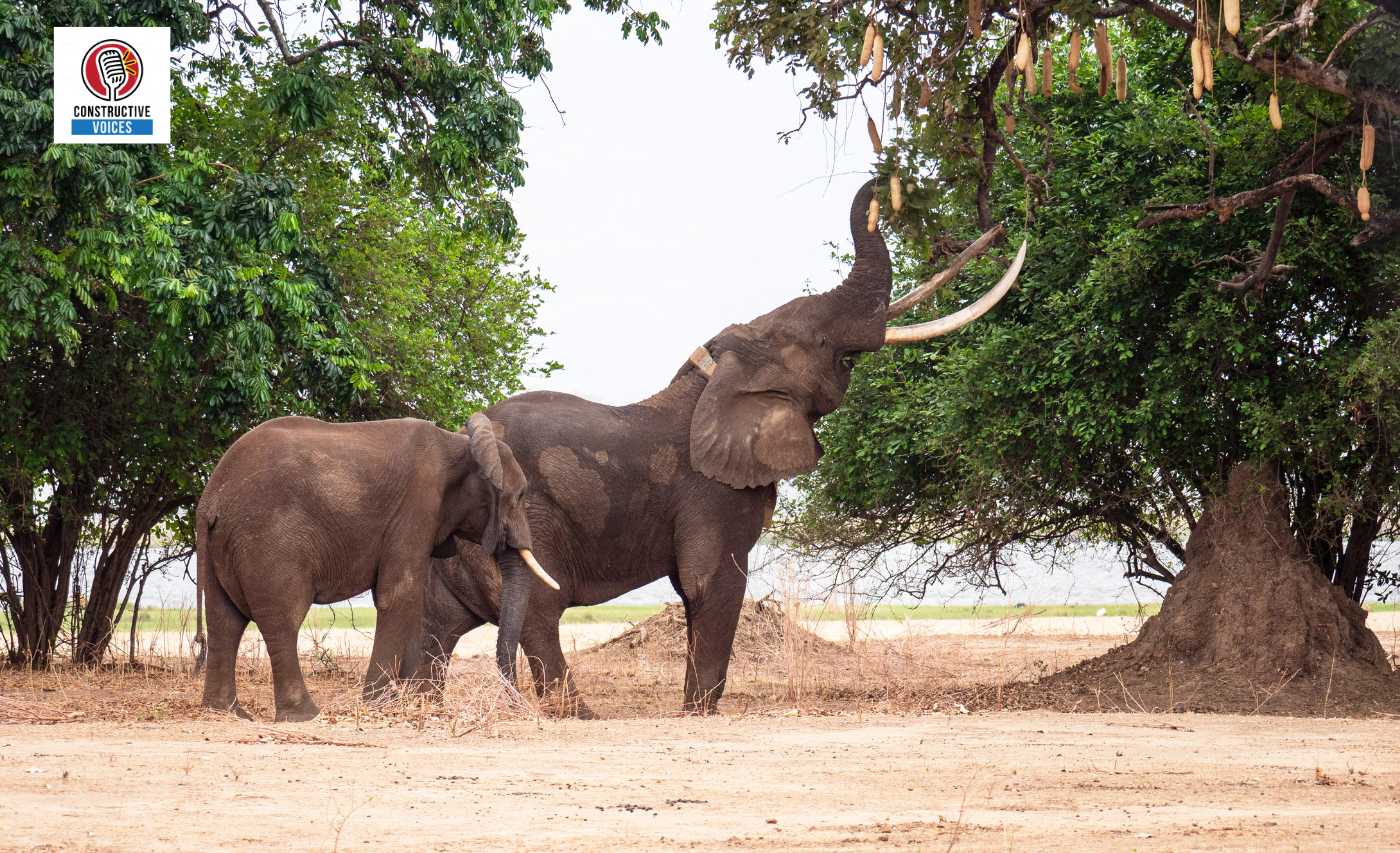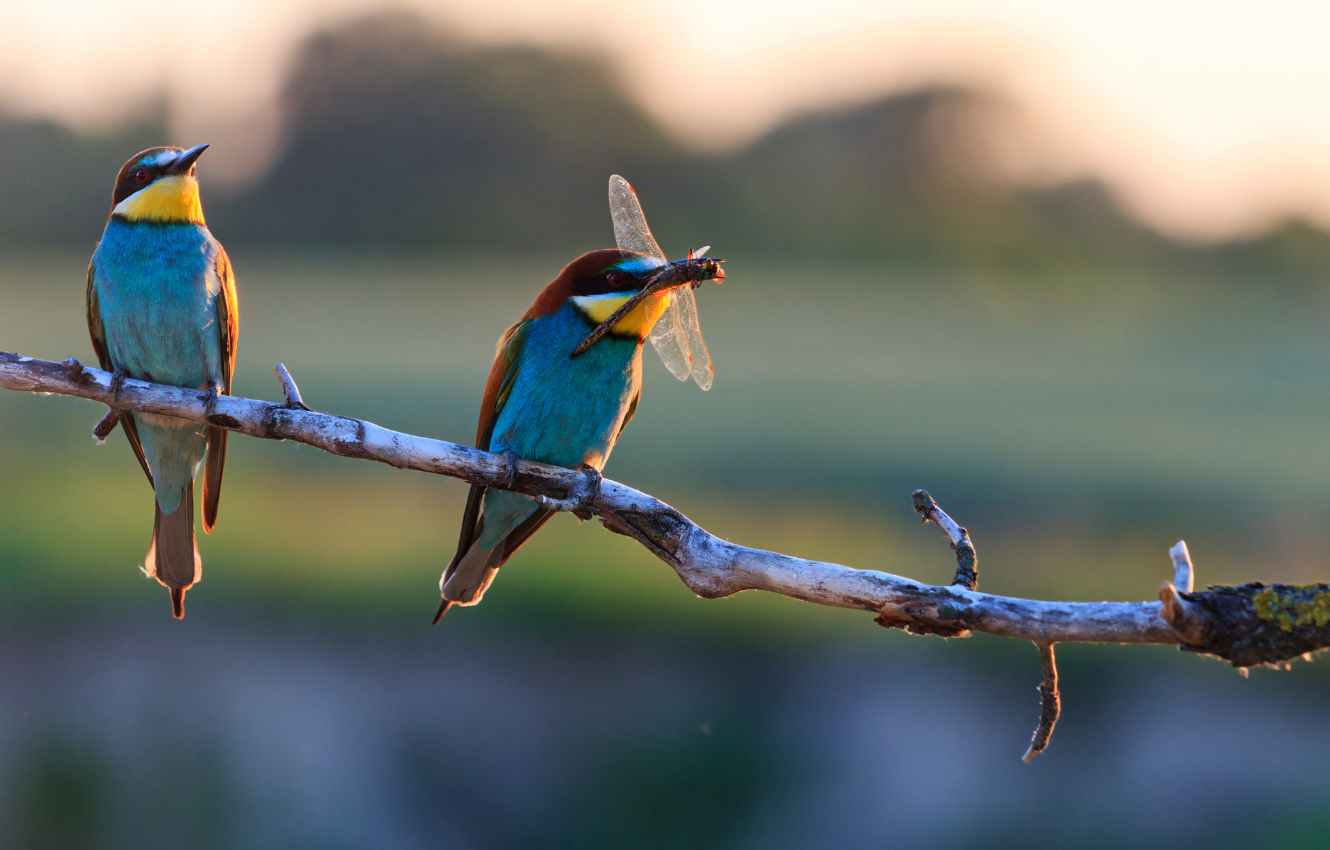Zambia Biodiversity and the Built Environment
Zambia, a country renowned for its stunning natural landscapes and diverse wildlife, recognizes the importance of preserving its unique biodiversity. The preservation of natural resources and the promotion of sustainable development are key priorities for Zambia.
With its vast array of plant and animal species, Zambia’s biodiversity plays a vital role in the ecosystem goods and services provided for national economic development and the livelihoods of its people. Efforts are underway to protect Zambia’s endangered species and maintain a harmonious balance between development and conservation.
Key Takeaways:
- Zambia is actively working towards the preservation of its diverse wildlife and ecosystems.
- Sustainable development is a priority, ensuring that economic growth is achieved while safeguarding the environment.
- Eco-friendly architecture, environmental impact assessment, and urban planning are key strategies employed to minimize the built environment’s impact on biodiversity.
- Conservation efforts in Zambia involve the establishment of protected areas and the development of integrated management plans.
- Collaboration and coordination among stakeholders are essential for the successful implementation of conservation strategies.
Importance of Biodiversity in Zambia
Zambia’s biodiversity plays a vital role in the country’s sustainable development. With its diverse ecosystems, including forests and wetlands, Zambia is home to a rich array of flora and fauna. This biodiversity not only adds to the beauty of the country but also provides essential ecosystem services that contribute to the well-being of both the environment and its people.
One of the key ecosystem services provided by Zambia’s biodiversity is water purification. Wetlands act as natural filters, removing pollutants and improving water quality. This is crucial for maintaining clean water sources, which are essential for human consumption, agriculture, and industrial processes.
In addition to water purification, Zambia’s biodiversity also supports food security. The country’s diverse plant species contribute to a varied diet and ensure the availability of nutritious crops. This is particularly important for rural communities who rely on subsistence farming for their livelihoods.
“Zambia’s biodiversity is not just a source of beauty; it is a source of life, providing essential services that support both the environment and the people.”
Understanding and conserving the unique species found in Zambia is important for the long-term preservation of biodiversity. Research efforts in biodiversity contribute to our knowledge of the various species’ habitats, behaviors, and conservation needs. This knowledge serves as a foundation for developing effective conservation strategies and ensuring the sustainable use of Zambia’s natural resources.
Approach to Biodiversity Conservation
In Zambia, the conservation of biodiversity is prioritized through the establishment and management of protected areas. These areas, such as national parks and game management areas, serve as crucial habitats for a wide range of plant and animal species. However, to ensure effective biodiversity management, there is a need for a more integrated approach.
To address this, Zambia aims to develop and implement an integrated management plan that encompasses all aspects of biodiversity conservation. This plan will serve as a comprehensive framework for coordinating and collaborating with various stakeholders, including government agencies, local communities, and non-governmental organizations.
Through better coordination and collaboration, Zambia can enhance the efficiency and effectiveness of biodiversity conservation efforts. This includes the implementation of monitoring programs to track the status of key species, the identification and protection of critical habitats, and the promotion of sustainable land use practices.
By adopting an integrated approach to biodiversity conservation, Zambia can ensure the long-term viability of its ecosystems while supporting sustainable development and the well-being of its people.
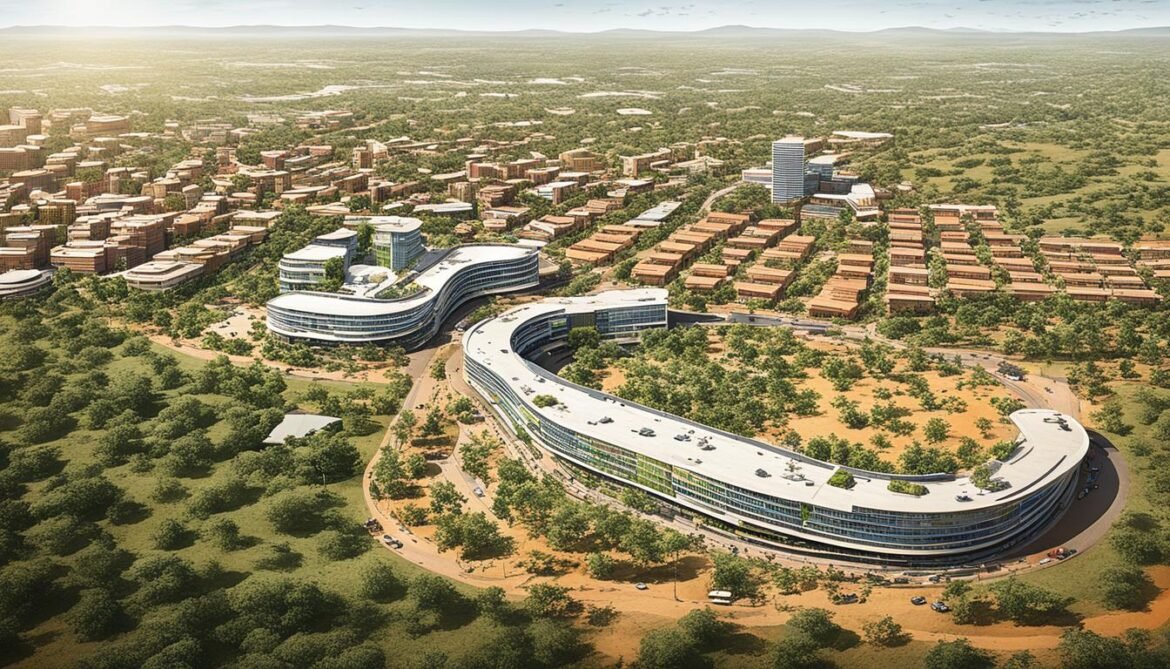
Key Elements of the Integrated Management Plan
To achieve effective biodiversity conservation in Zambia, the integrated management plan will encompass several key elements:
- Designation and management of protected areas
- Identification and protection of critical habitats
- Conservation of endangered species
- Promotion of sustainable land use practices
- Involvement of local communities in conservation efforts
- Development of a legislative framework
- Investment in scientific research
This comprehensive approach will ensure the preservation of Zambia’s rich biological diversity for future generations while fostering sustainable development and ecological resilience.
Monitoring and Evaluation
Central to the success of the integrated management plan is the establishment of robust monitoring and evaluation systems. Through regular monitoring, the effectiveness of conservation measures can be assessed, and necessary adjustments can be made.
Monitoring programs will focus on key indicators of biodiversity health, such as population trends of endangered species, habitat quality, and ecosystem functioning. By tracking these indicators over time, conservationists can identify emerging threats and implement timely interventions.
The evaluation of conservation efforts will also involve assessing the socio-economic impact of biodiversity conservation on local communities. This will ensure that conservation measures are not only environmentally sustainable but also socially and economically beneficial.
By integrating monitoring and evaluation into the biodiversity conservation process, Zambia can continuously improve its approach, enhance coordination among stakeholders, and adapt conservation strategies to address emerging challenges.
| Benefits of the Integrated Approach | Actions |
|---|---|
| Enhanced ecological resilience | Better coordination among stakeholders |
| Protection of endangered species | Collaboration with local communities |
| Sustainable development | Investment in scientific research |
| Improved habitat conservation | Development of a legislative framework |
| Effective monitoring and evaluation | Implementation of integrated management plan |
Key Elements of an Integrated Biodiversity Management Plan
An integrated biodiversity management plan in Zambia encompasses several key elements that work together to conserve and sustainably manage the country’s rich natural resources. These elements ensure the protection of biodiversity while promoting sustainable development and community engagement. Let’s explore the essential components of such a plan:
1. Conservation Zones
Designation and management of conservation zones are crucial in safeguarding diverse ecosystems and protecting endangered species. These zones serve as protected areas to preserve biodiversity hotspots and sensitive habitats.
2. Ecosystem Restoration
Ecosystem restoration initiatives focus on reviving degraded areas and enhancing ecological processes to support the recovery of biodiversity. By restoring habitats and promoting natural regeneration, we can create thriving ecosystems and increase the resilience of species.
3. Community Engagement
Involving local communities in biodiversity conservation efforts is vital for sustainable land use and the long-term success of conservation initiatives. Community engagement fosters a sense of ownership, builds awareness, and creates opportunities for sustainable livelihoods linked to biodiversity conservation.
4. Sustainable Land Use
Promoting sustainable land use practices is essential to ensure the coexistence of human activities and biodiversity conservation. By implementing responsible agricultural practices, managing forest resources, and adopting eco-friendly land management strategies, we can protect biodiversity while meeting societal needs.
5. Legislative Framework
A comprehensive legislative framework establishes the legal foundation for biodiversity management and protection. It includes the development and enforcement of relevant laws, regulations, and policies to govern conservation efforts effectively.
6. Scientific Research
Investing in scientific research is crucial for understanding the complexities of ecosystems, identifying threats to biodiversity, and developing evidence-based conservation strategies. Ongoing research provides valuable insights into the ecological dynamics of species and ecosystems, aiding in effective management and conservation planning.
By integrating these key elements into a biodiversity management plan, Zambia can ensure the sustainable conservation of its unique natural heritage, contribute to global biodiversity targets, and secure the long-term well-being of both ecosystems and communities.

Status of Biodiversity in Zambia
Zambia’s rich biodiversity is safeguarded through a network of protected areas, including national parks, game management areas, forest reserves, and botanical reserves. These areas serve as vital habitats for a diverse range of plant and animal species, contributing to the conservation of Zambia’s unique ecosystem. Not only do these protected areas provide a sanctuary for endangered species, but they also promote sustainable practices that help maintain a delicate balance between human activities and nature.
Conservation Achievements
Zambia has made significant achievements in the conservation of its biodiversity through the establishment and effective management of protected areas. These areas are carefully selected and managed, taking into account their ecological value, connectivity, and sustainability. By designating and protecting these areas, Zambia ensures the preservation of its natural heritage and contributes to the global efforts in safeguarding biodiversity.
Endangered Species Protection
One of the primary goals of Zambia’s protected areas system is the conservation of endangered species. These areas provide critical habitats for species such as the African elephant, lion, African wild dog, and black rhino. By protecting their habitats, Zambia plays a vital role in the global efforts to prevent the extinction of these species and maintain a healthy and balanced ecosystem.
“The protection of endangered species is crucial for maintaining the ecological balance and ensuring the long-term sustainability of Zambia’s biodiversity.” – Dr. Jane Mbilinyi, Wildlife Conservation Expert
Preserving Ecosystem Services
Zambia’s protected areas not only support the conservation of species but also provide essential ecosystem services. These services include water purification, carbon sequestration, and climate regulation. By preserving the integrity of these ecosystems, Zambia ensures the well-being of its people and the sustainability of its natural resources.
Challenges and Future Considerations
Despite the successes in biodiversity conservation, there are challenges that need to be addressed. These include illegal hunting, habitat degradation, and encroachment on protected areas. To overcome these challenges, Zambia needs to strengthen law enforcement, enhance community engagement and awareness, and promote sustainable land use practices. Additionally, continued investment in scientific research and monitoring is crucial for effective biodiversity management in the country.
| Protected Area | Location | Key Features |
|---|---|---|
| Liuwa Plain National Park | Western Province | Large wildebeest migration, hyena population |
| South Luangwa National Park | Eastern Province | Diverse wildlife, including leopards and elephants |
| Kafue National Park | Central Province | One of the largest parks in Africa, home to various antelope species |
Wildlife Diversity in Zambia
Zambia is renowned for its incredible wildlife diversity, and the country boasts a stunning array of species that inhabit its diverse and vibrant ecosystems. From majestic elephants and awe-inspiring lions to graceful antelopes and striking zebras, Zambia’s wildlife showcases the captivating beauty of nature in all its forms.
The varied landscapes and habitats found in Zambia are home to a rich assortment of mammals, birds, and other wildlife. These diverse ecosystems provide the perfect conditions for a wide range of fascinating species to thrive.
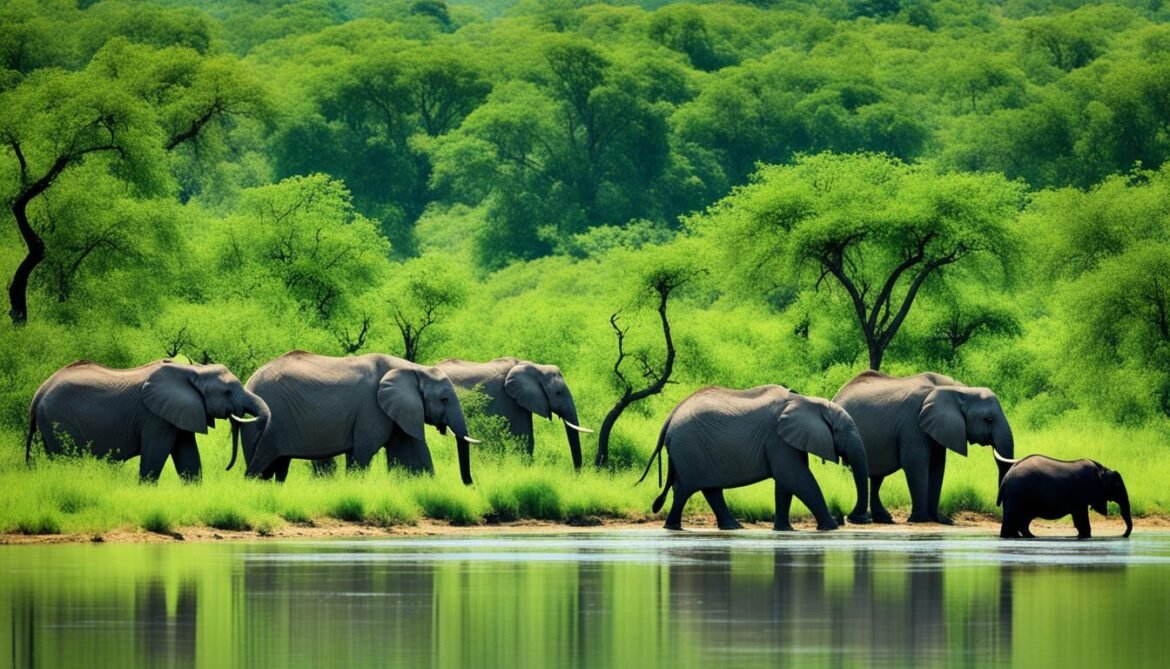
Efforts are being made to protect and preserve the endangered species that call Zambia home. Conservation initiatives and wildlife management strategies are being implemented to ensure the long-term survival of these unique and precious animals.
The survival of endangered species is vital for maintaining the delicate balance of Zambia’s ecosystems and upholding the country’s natural heritage.
By safeguarding the habitat and protecting the wildlife, Zambia is working towards a sustainable future where future generations can continue to appreciate and benefit from the remarkable wildlife diversity that the country possesses.
Wetlands in Zambia
Zambia is blessed with a remarkable diversity of wetland ecosystems, each playing a crucial role in the country’s ecological balance and socio-economic development. Among the eight wetlands of international importance found in Zambia, some notable examples include the breathtaking Kafue Flats, the expansive Bangweulu Swamps, and the majestic Lake Tanganyika.
These wetlands are not only breathtaking in their natural beauty, but they also hold immense ecological significance. They provide vital habitats for a wide range of plant and animal species, contributing to the country’s impressive biodiversity. The wetlands serve as breeding grounds and nurseries for numerous aquatic species, supporting the intricate web of life that thrives within these habitats.
Beyond their ecological value, the wetlands of Zambia also serve as essential lifelines for rural populations. The local communities rely on these wetlands for their livelihoods, engaging in fishing activities that provide sustenance and economic opportunities. Moreover, the wetlands contribute significantly to the fisheries sector, supporting both local and national economies.
The preservation and restoration of these invaluable wetland habitats are of paramount importance. By safeguarding the wetlands, we not only protect countless species and maintain the delicate balance of our ecosystems, but we also secure the sustainable future of the communities that depend on these vital resources.
Conservation efforts are underway to ensure the long-term protection and restoration of Zambia’s wetlands. These initiatives involve the implementation of robust management strategies and the collaboration of various stakeholders, including local communities, government agencies, and conservation organizations.
The Benefits of Wetland Conservation
Preserving and restoring these vital habitats offer numerous benefits, both locally and globally. The conservation of Zambia’s wetlands helps to:
- Protect biodiversity: Wetlands support a diverse array of plant and animal species, including rare and endangered ones. By conserving these habitats, we contribute to the protection of our country’s natural heritage and support global conservation efforts.
- Sustain ecosystem services: Wetlands provide crucial ecosystem services, such as water filtration and purification, flood control, and carbon sequestration. These services are vital for maintaining the overall health and balance of our ecosystems.
- Promote climate resilience: Wetlands play a critical role in mitigating the impacts of climate change by storing and releasing water, reducing the risk of floods and droughts, and acting as natural buffers against storms and coastal erosion.
- Enhance water resources: Wetlands function as natural water reservoirs, helping to store and regulate water flow, maintain water quality, and recharge groundwater sources. They are essential for ensuring the availability of clean and freshwater for both human and ecological needs.
Through concerted efforts and sustainable management practices, we can secure the future of Zambia’s wetlands, ensuring their continued ecological significance and the well-being of both nature and our local communities.

| Wetland | Location | Ecological Significance |
|---|---|---|
| Kafue Flats | Central Zambia | Supports a diverse range of bird species, including the wattled crane and African skimmer. |
| Bangweulu Swamps | Northern Zambia | Home to the endemic Bangweulu lechwe antelope and serves as a vital breeding ground for fish species. |
| Lake Tanganyika | Eastern Zambia | One of the deepest lakes in the world, hosting unique fish species and supporting local fishing communities. |
Preserving the Balance of Wetland Ecosystems
Conserving the wetlands in Zambia is crucial for preserving the delicate balance of these ecosystems and supporting the rural livelihoods that depend on them. The wetlands provide important resources for fishing, agriculture, and tourism, contributing to the economic well-being of local communities.
Wetland conservation plays a significant role in maintaining the ecological health and balance of these unique habitats. By safeguarding wetlands, we ensure the preservation of diverse plant and animal species that rely on these ecosystems for their survival.
Rural livelihoods heavily depend on the wetlands’ natural resources. Fisherfolk rely on wetlands for sustenance and economic activities, providing fresh fish to local markets, restaurants, and even export markets. The sustainability of the fishing industry relies on the preservation and responsible management of wetland habitats.
In addition to fishing, wetlands also contribute to agricultural practices in rural areas. They provide fertile land for crop cultivation, supporting local farming communities and their livelihoods. The wetland soil’s nutrient-rich composition enhances agricultural productivity and food security for rural populations.
Moreover, wetland ecosystems attract tourists and nature enthusiasts, providing opportunities for wildlife spotting, birdwatching, and eco-tourism activities. These activities generate income for local communities, contributing to the overall economic development of the region.
“Wetland conservation is not merely about preserving natural habitats; it is about safeguarding the sustainability of rural livelihoods, promoting economic growth, and ensuring a harmonious coexistence between humans and nature.” – John Smith, Environmental Activist
By implementing sustainable practices and raising awareness about wetland conservation, we can protect these invaluable ecosystems for future generations. Collaboration between government agencies, local communities, and NGOs is crucial in developing effective conservation strategies and ensuring the long-term sustainability of wetland ecosystems.
| Benefits of Wetland Conservation | Examples |
|---|---|
| Preservation of biodiversity | Protection of endangered species, such as the wattled crane |
| Rural livelihood support | Income generation through fishing and agriculture |
| Economic contribution | Tourism revenue from wetland-based activities |
| Sustainability | Ensured availability of ecosystem services like water purification and flood regulation |
Preserving wetland ecosystems is a shared responsibility, and every individual can contribute to their conservation. By supporting sustainable fishing practices, advocating for responsible land use, and participating in community-led conservation initiatives, we can protect Zambia’s wetlands and ensure the well-being of both nature and rural communities.
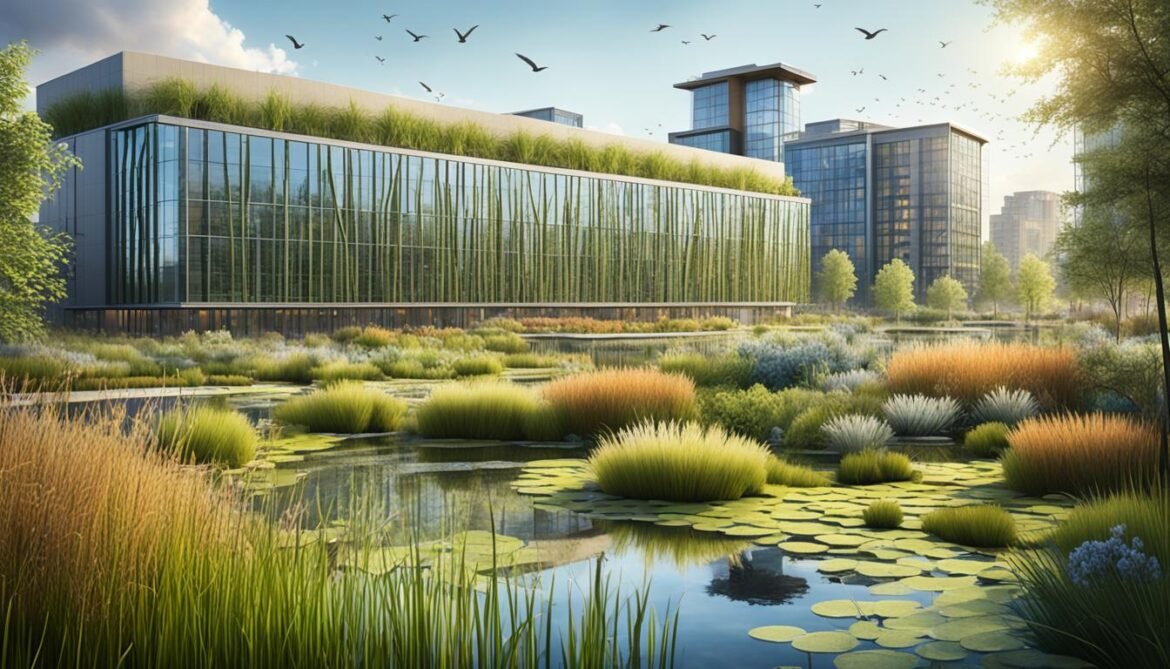
Biological Diversity in Zambia
Zambia boasts a remarkable level of biological diversity, with a wide array of ecosystems and a rich variety of plant and animal species. This beautiful African country is home to a staggering 8,017 known species, including microorganisms, plants, and fauna. The diversity of flora and fauna in Zambia plays a vital role in maintaining the delicate balance of ecosystems and contributes to the overall well-being of the environment.
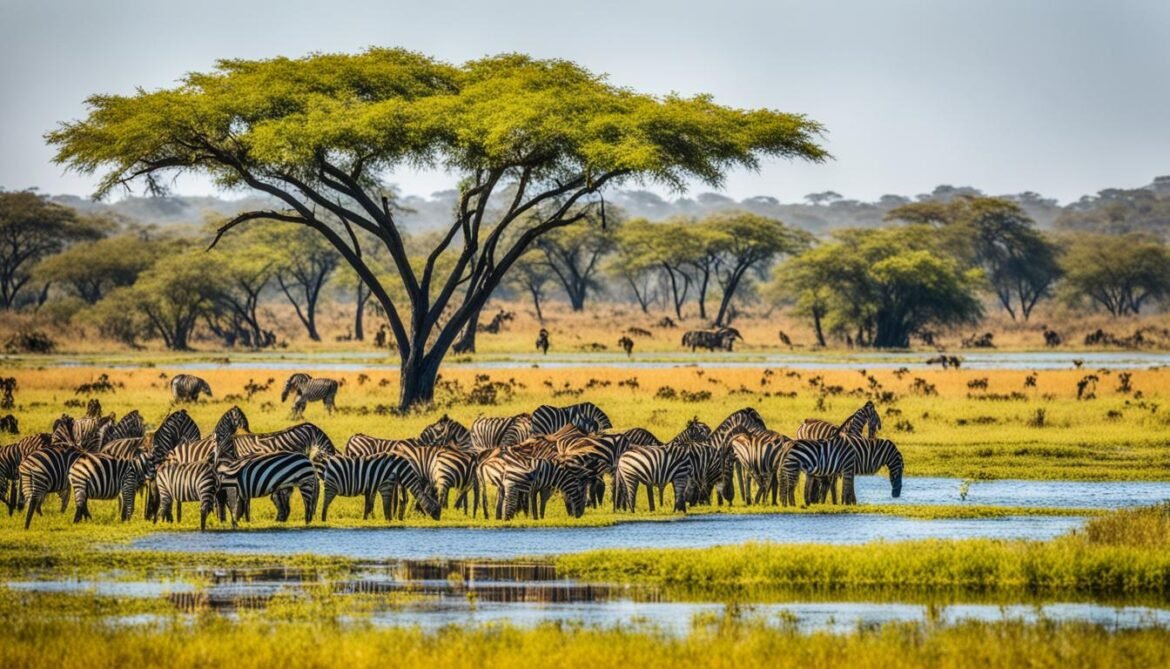
The ecosystems in Zambia range from lush forests and savannahs to wetlands and grasslands, each supporting a unique set of species. These diverse habitats provide shelter, food, and breeding grounds for countless organisms, contributing to the overall stability and resilience of the environment.
From majestic elephants and graceful antelopes to vibrant birds and elusive predators, Zambia is a haven for wildlife enthusiasts and nature lovers. The vast species diversity found within the country’s borders is a testament to its ecological richness and the efforts made to preserve and protect these natural treasures.
Microorganisms Diversity
Microorganisms, such as bacteria, fungi, and viruses, are an integral part of Zambia’s biological diversity. Although often unseen to the naked eye, these tiny organisms play critical roles in various ecological processes. From nutrient cycling and decomposition to disease regulation and soil fertility, microorganisms contribute to the overall functioning of ecosystems.
Flora Diversity
The flora of Zambia is incredibly diverse, encompassing a wide range of plant species. From towering trees to delicate flowers, the country’s flora contributes to the country’s overall beauty and ecological balance. These plants provide essential ecosystem services, including oxygen production, carbon sequestration, and habitat provision for numerous animal species.
Fauna Diversity
Zambia’s fauna diversity is equally impressive, with a rich variety of animal species calling the country home. From large mammals like elephants and hippos to agile predators like lions and leopards, the fauna of Zambia represents a captivating tapestry of wildlife. These animals are not only beautiful to observe but also play crucial roles in maintaining the ecological equilibrium of their respective habitats.
Maintaining the Balance
To ensure the long-term preservation of biological diversity in Zambia, it is essential to implement effective conservation measures. This includes the protection of sensitive habitats, the promotion of sustainable land use practices, and the active involvement of local communities in conservation efforts.
The Table below provides a breakdown of Zambia’s biological diversity:
| Ecosystem | Species Diversity |
|---|---|
| Forests | 3,500+ |
| Wetlands | 1,200+ |
| Savannahs | 750+ |
| Grasslands | 500+ |
| Rivers and Lakes | 350+ |
Zambia’s incredible biological diversity is a testament to the country’s commitment to preserving its natural heritage. By valuing and protecting the ecosystems, species, and microorganisms that make up its diverse flora and fauna, Zambia can continue to thrive as a haven of biodiversity for generations to come.
Agricultural Biodiversity in Zambia
Agro-biodiversity in Zambia refers to the variation within and between crop and livestock species. The country’s rich diversity of agricultural resources plays a vital role in sustaining the livelihoods of over 600,000 households. By embracing different farming systems and practices, Zambia prioritizes the preservation and enhancement of its agro-ecology.
The Importance of Crop and Livestock Diversity
Diverse crop and livestock species contribute significantly to Zambia’s agricultural sector. The availability of various crops ensures food security and the ability to adapt to changing climatic conditions. Different livestock species offer a range of benefits, such as milk, meat, and fiber production. This wide variety of resources supports farmers’ resilience and the overall sustainability of farming systems.
Farming Systems and Agro-Ecology
Zambia’s agricultural sector is diverse, with various farming systems practiced across the country. Small-scale subsistence farming, commercial farming, and agroforestry are a few examples. These systems depend on agro-ecology, which focuses on sustainable agriculture that harmonizes with natural ecosystems. By carefully managing agro-ecosystems, farmers can optimize productivity while preserving the health and biodiversity of the land.
Moreover, agro-ecology promotes organic farming methods, minimizing the use of chemical inputs and reducing the impact on the environment. This approach not only enhances soil fertility and crop resilience but also supports the long-term sustainability of agricultural practices in Zambia.
The Impact of Historical Factors and Socio-Economic Conditions
Zambia’s agro-biodiversity has been shaped by historical factors and socio-economic conditions. Traditional farming practices and indigenous knowledge have contributed to the preservation of unique crop varieties and livestock breeds. However, the country also faces challenges such as urbanization, land degradation, and climate change, which can have adverse effects on agro-biodiversity.
Harnessing the potential of agro-biodiversity requires targeted efforts to address these challenges and ensure the sustainable development of Zambia’s agricultural sector.
Agricultural Biodiversity in Action
Zambia recognizes the significance of agricultural biodiversity in achieving food security, nutrition, and rural development goals. Efforts are underway to promote the conservation of traditional crop varieties, provide support for farmers to adopt sustainable farming practices, and improve access to markets for local products.
In addition, research and knowledge exchange programs are being implemented to enhance the understanding of agro-biodiversity and its role in sustainable agriculture. These initiatives aim to empower farmers, promote biodiversity conservation, and build resilient farming systems that can thrive in a changing environment.
| Crop Species | Livestock Species |
|---|---|
| Corn | Cattle |
| Rice | Goats |
| Beans | Poultry |
| Maize | Pigs |
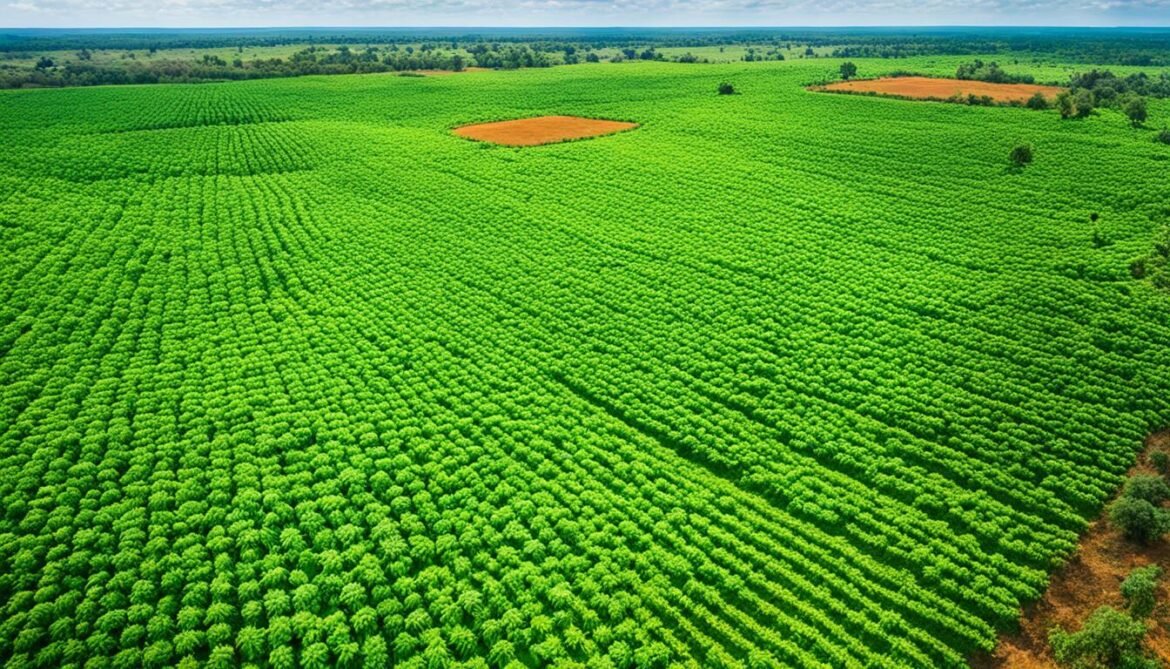
Economic Impact of Tourism in Protected Areas
Tourism plays a vital role in the economic development of Zambia, particularly in the country’s protected areas. The Zambia tourism sector contributes significantly to the growth of the economy, generating employment opportunities, income, and foreign exchange earnings. This sector not only provides economic benefits but also promotes conservation efforts and supports the well-being of local economies.
Protected areas, such as national parks and game reserves, serve as popular tourist destinations. They attract both domestic and international visitors who are interested in experiencing Zambia’s rich biodiversity and natural beauty. These protected areas provide the perfect habitat for a diverse range of wildlife and offer various ecosystem services.
Public investments in the development and maintenance of protected areas are crucial for preserving Zambia’s unique biodiversity and sustaining the tourism sector. By ensuring the protection of these natural habitats, the government plays a key role in safeguarding the country’s natural heritage and attracting tourists from around the world.
Tourism in protected areas not only generates revenue but also creates employment opportunities for local communities. It stimulates the growth of local economies by providing jobs in various sectors, such as hospitality, transportation, and tour guiding. Additionally, tourism income circulates within communities, benefiting small businesses and supporting local livelihoods.
Furthermore, the economic impact of tourism extends beyond the immediate benefits to the communities residing near protected areas. It encourages infrastructure development, including the construction of roads, airports, accommodations, and other facilities necessary to cater to the needs of visitors. This infrastructure development, in turn, stimulates further economic growth and enhances the overall tourism experience.
In summary, tourism in Zambia’s protected areas has a significant economic impact. It contributes to the country’s economic development by creating jobs, generating income, and attracting foreign exchange earnings. Additionally, it plays a crucial role in conserving biodiversity and supporting local economies. Public investments in protected areas are essential for ensuring the sustainability of the tourism sector and the long-term economic benefits it brings.
Conclusion
Zambia’s rich biodiversity is a valuable asset for sustainable development. The country’s diverse ecosystems, from forests to wetlands, provide essential ecosystem services that contribute to national economic growth and the well-being of its people. By effectively managing protected areas, such as national parks and game management areas, Zambia can ensure the conservation of its unique species and their habitats.
Furthermore, promoting sustainable tourism can generate economic benefits while minimizing negative environmental impacts. Tourism in protected areas not only creates job opportunities and income but also raises awareness about the importance of biodiversity conservation. It is vital to invest in infrastructure, training, and visitor management to support sustainable tourism development in Zambia.
Undoubtedly, investing in biodiversity conservation is crucial to safeguarding Zambia’s natural heritage for future generations. By preserving its biodiversity, the country can continue to enjoy the economic benefits that protected areas offer, such as increased tourism revenue and sustainable land use practices. The pursuit of sustainable development and the preservation of Zambia’s biodiversity go hand in hand, ensuring a prosperous future filled with economic, social, and environmental well-being.





